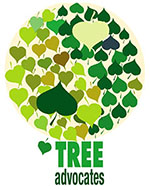A document sent by Auckland Council in response to a request for information on the register. Dated 24 May 2019 (sorry for delay in posting this).
Short version:
- The Schedule of Notable Trees is not closed. It is part of the Auckland Unitary Plan.
- Anyone is able to nominate a tree or trees for inclusion in Schedule 10 by filling out the nomination form available on the council’s website. This is then sent to the Heritage team’s database, where nominations are held until such time as a plan change is initiated to undertake a full review of the Schedule. As above, there is currently no timeframe to start that work as of yet. All those who nominate a tree/trees will be acknowledged via a letter from the Heritage team.
- Removing or altering a tree or trees, which are listed in Schedule 10, requires a resource consent. It is not a ‘simple’ or ‘automatic’ procedure to remove a tree from the Schedule.
- Trees over 4m in height and 400mm in girth, which are located in Open Space zone have the same ‘status’ in that their removal and more than minor trimming requires a consent. The same applies to trees in road reserves. There are also multiple other rules throughout the AUP relating to trees/bush in that a consent is required to remove these. For example, in Significant Ecological Areas (SEAs).
- Removing or altering a tree or trees, which are listed in Schedule 10, requires a resource consent. It is not a ‘simple’ or ‘automatic’ procedure to remove a tree from the Schedule. A consent application must be made and this is assessed under the rules relating to Scheduled Trees (Chapter D13 – Notable Trees Overlay).
- The central strategy which brings together the initiatives and plans in terms of Auckland’s trees is the Urban Forest Strategy.
- ... council has the ability to protect trees on private land. The Schedule of Notable Trees, as explained in previous answers, is part of the AUP and forms one of a number of sets of rules in the Plan that protects trees across the region, both on public and private land.
(Our emphasis.)
Here is the full answer. Many useful links to relevant documents are in this document. If you feel any could usefully be shared on this site, please get in touch.
